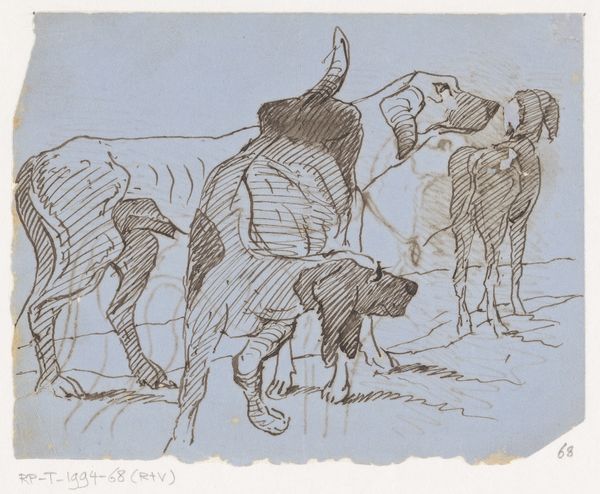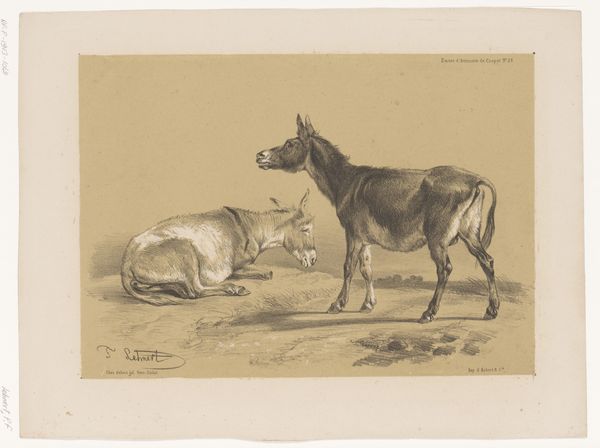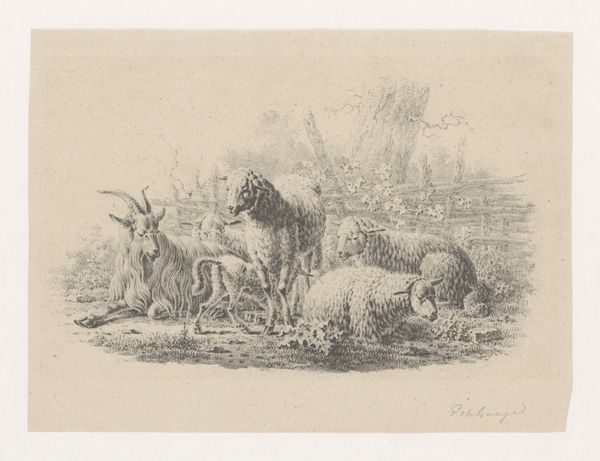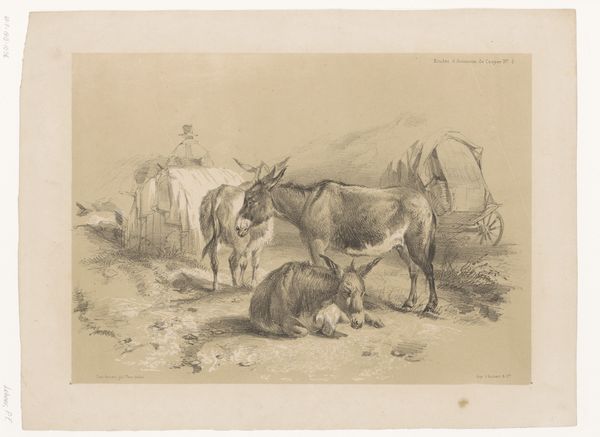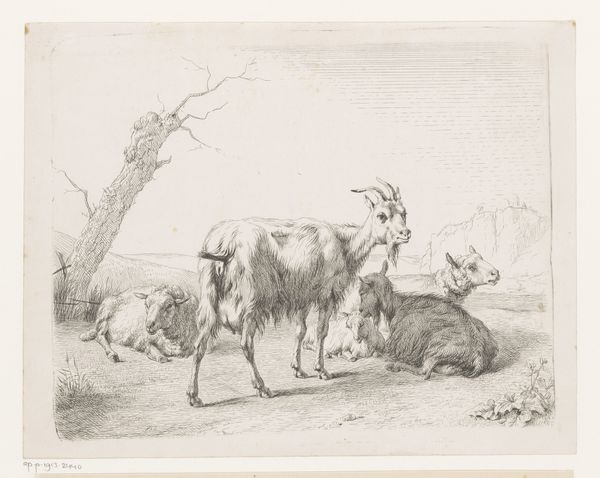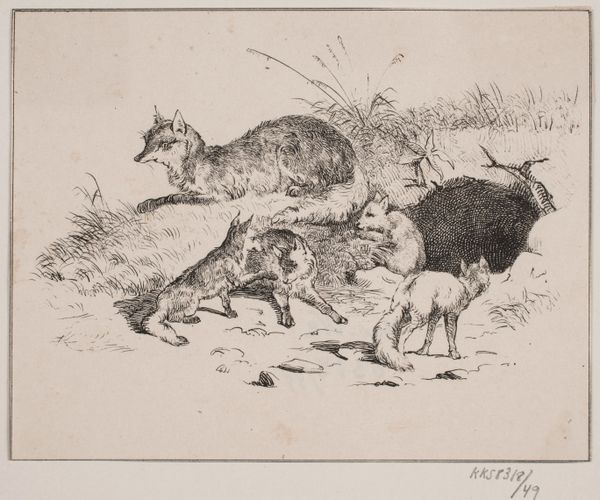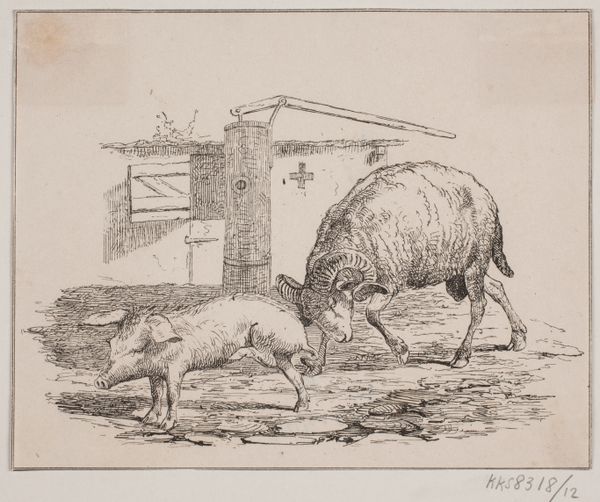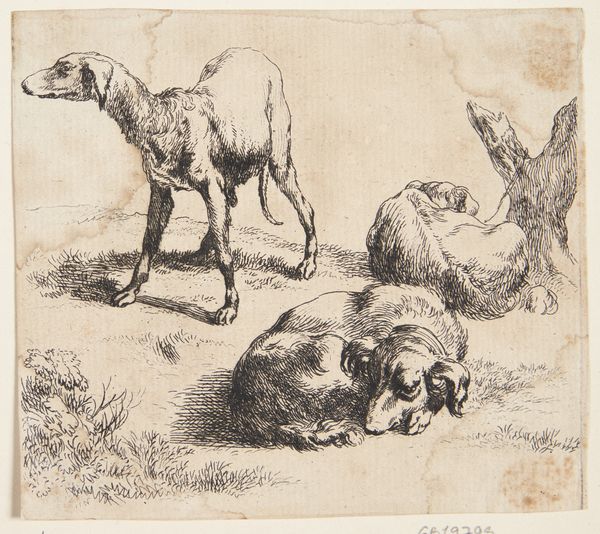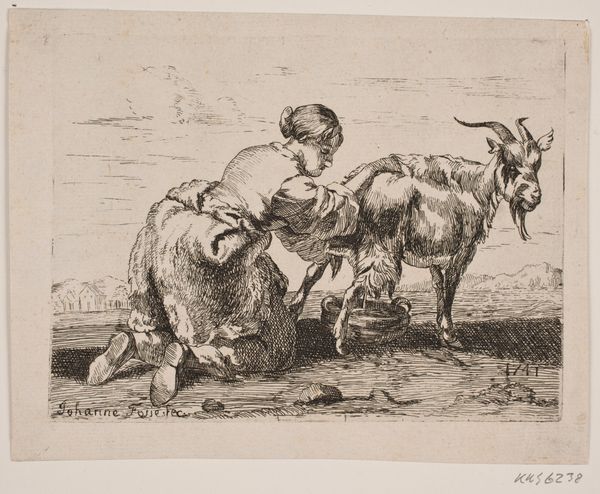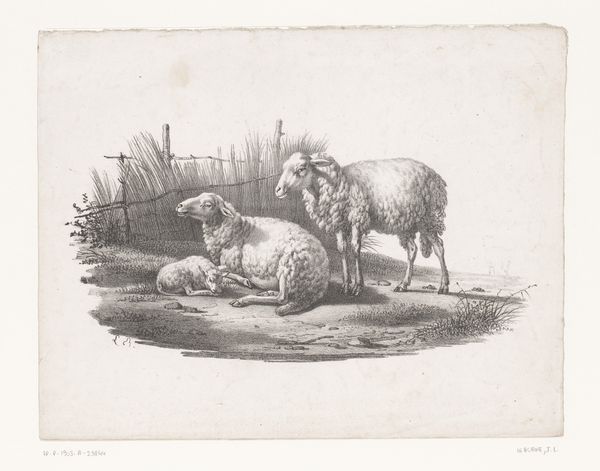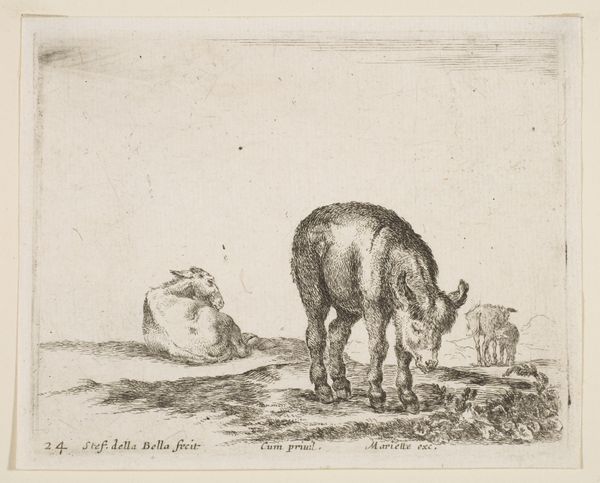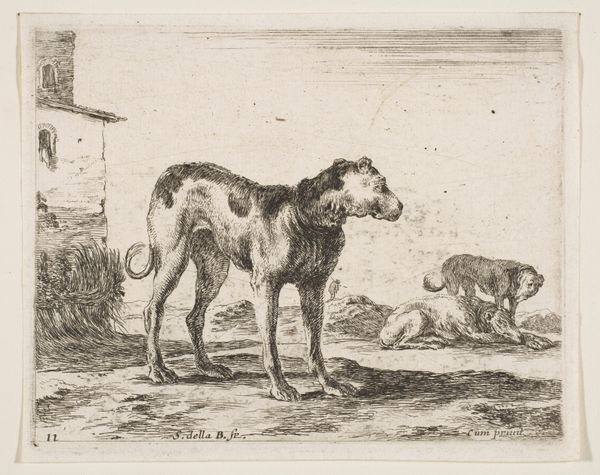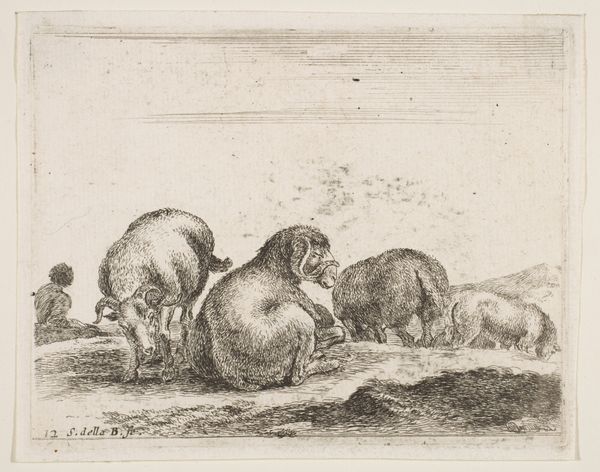
drawing, lithograph, print
#
drawing
#
lithograph
# print
#
landscape
#
genre-painting
#
realism
Dimensions: 98 mm (height) x 126 mm (width) (bladmaal)
Curator: Let’s have a closer look at Adolph Kittendorff's "Spædkalven" created in 1845, rendered through lithography and drawing. It’s held here at the SMK. Editor: It feels so domestic, almost bucolic. The immediate impression is of everyday farm life rendered in a delicate hand; there’s a distinct visual lightness despite the earthy subject matter. Curator: The seemingly simple subject matter evokes so much about 19th-century agrarian life. Kittendorff emphasizes realism in his detailed portrayal of the animals. There’s an unidealized authenticity that resists Romanticism. Editor: Absolutely, and that is why it feels very democratic and empowering, by centering the animals in such a prominent way in the composition. They appear almost sentient within the larger sociopolitical contexts of animal welfare, ownership and rural poverty, which are worth noting in an intersectional way, I think. Curator: Interesting to view this as more than simply "genre-painting." Consider how the domestic animals have held significant symbolism in art throughout centuries: pigs embodying prosperity, poultry, like the rooster depicted, suggesting vigilance and male virility. Editor: And the ducks? Do they represent adaptation and freedom? The very gathering around water could be interpreted as a moment of peace but also speaks to the necessity of communal resources. There's something distinctly modern about it; a recognition of ordinary rural realities without condescension. Curator: In lithography, particularly with the integration of drawing techniques, we see how this print culture fostered greater accessibility to imagery for wider audiences. Editor: Access yes, but to whom was the visual culture truly accessible, both then and today? Whose lives get celebrated in these mediums and what socioeconomic structures do they subtly reinforce? That said, the print makes a simple scene carry lasting meaning. Curator: These elements contribute to how we remember and frame images from this time period. Even unassuming artworks may bear profound and lasting social commentary. Editor: Absolutely, Adolph Kittendorff's depiction of an everyday farm scene indeed offers enduring insights. It's about critically assessing the messages of representation within its context and today.
Comments
No comments
Be the first to comment and join the conversation on the ultimate creative platform.
